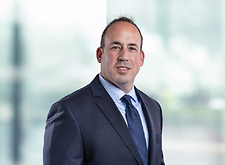New York Adopts Aggressive Drinking Water Standards for Emerging Contaminants PFOA, PFOS, and 1,4-Dioxane
New York has been among the most aggressive States in addressing “emerging contaminants,” which are synthetic or natural chemicals that are increasingly being detected in water and whose harms are not fully known nor yet subject to uniform regulation. On July 30, 2020, Governor Cuomo announced that New York had adopted a first-in-the-nation maximum contaminant level (“MCL”) of 1 part per billion (“ppb”) for 1,4-dioxane, and similarly aggressive MCLs of 10 parts per trillion (“ppt”) for PFOA and PFOS.
1,4-dioxane is an emerging contaminant most commonly used as a solvent in paper and textile processing, as part of the chemical manufacturing process, and as an automotive coolant, but trace amounts may be found in household and personal cleansers and cosmetics.
PFOA and PFOS are chemicals that fall into the category of per- and polyfluoroalkyl substances (“PFAS”) and are often used in non-stick and stain resistant coatings, among many other applications. PFOA and PFOS, like all PFAS, are extremely persistent in the environment and are often referred to as “forever chemicals” due to their resistance to breaking down naturally, and are rather ubiquitous in the environment.
The new regulations, which are a result of the State’s Drinking Water Quality Council’s work, will impose regular testing and monitoring requirements on public water systems once the Health Commissioner approves these MCLs. Public water systems serving at least 10,000 people will start testing within 60 days of the date the regulations are published in the New York State Register; systems serving between 3,300 and 9,999 customers will have to begin testing within 90 days; and all other systems will begin testing within six months. Should results indicate that these contaminants exist above the prescribed MCLs, the water system must notify its customers and develop a plan to address the contamination.
While these MCLs are among the most protective in the nation, there is concern regarding the potentially significant costs necessary to investigate, cleanup, and take corrective action to comply with the newly-issued MCLs. That is, in order to pay for these potentially significant costs, some water systems may require financial assistance, whether through grants or some other means, to pay for the costs associated with efforts to bring the water system into compliance. Given these expected costs, public water systems will likely search for the origin of the contamination, and thus pursue manufacturers and other entities that may have caused or contributed to the contamination. Litigation has already been commenced by many municipal water systems and districts across the country, with the most aggressive being pursued in New York to date on Long Island.
Hodgson Russ will continue to monitor drinking water standards and expected litigation regarding these newly established MCLs. If you have questions related to the regulations, or navigating any other environmental-related issue, please contact Michael Hecker (716.848.1599), Jeff Stravino (716.848.1394), or anyone else on the Hodgson Russ Environmental team, and we would be happy to help.
Featured
- Partner
- Partner
- Partner
- Partner
- Partner
- Partner
- Partner
- Partner
- Partner
- Partner
- Partner
- Partner
- Partner











